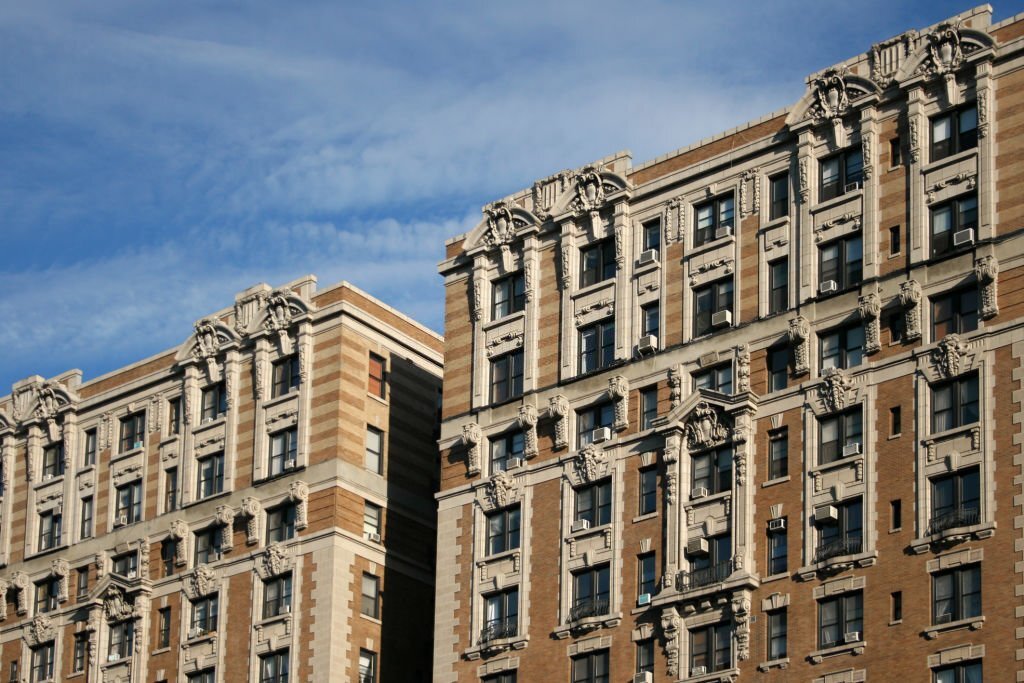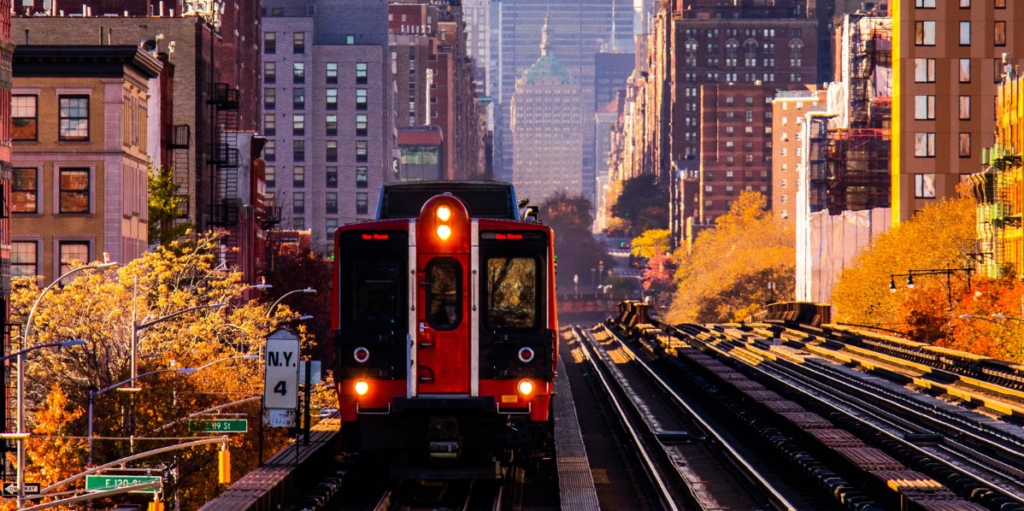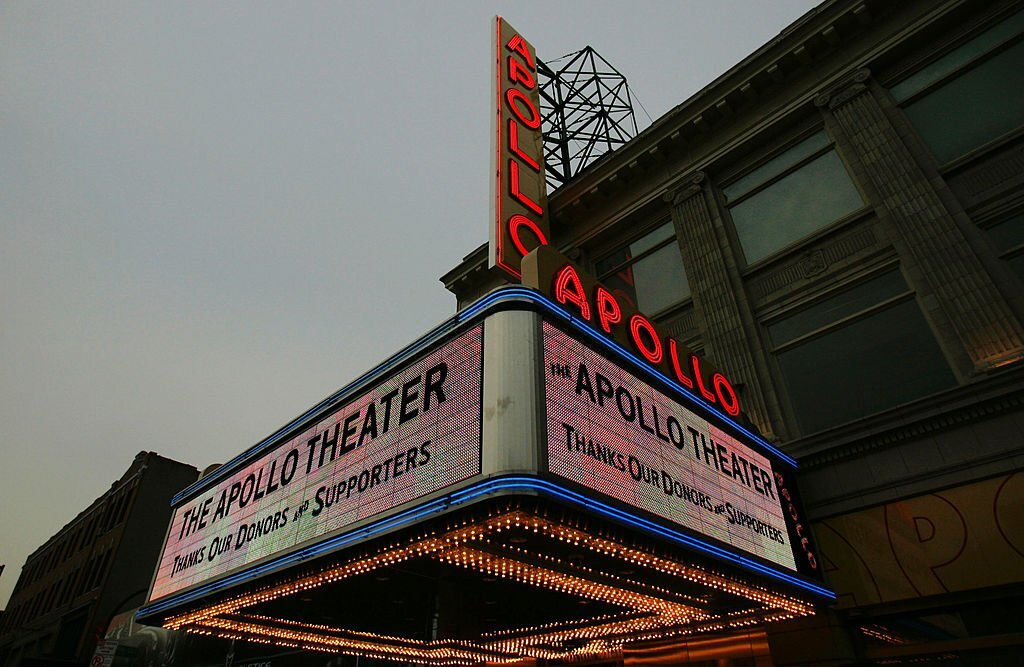If you’re vising or moving to Harlem, you’ll want to know how safe it is and what to expect in the area. A community-oriented neighborhood rich in culture and history, there are plenty of reasons to live in Harlem. Here is more information on this New York City neighborhood to better understand its safety (and more).
A Brief History of Harlem
Harlem is a neighborhood in the Manhattan borough of New York located in most of the Upper Manhattan region. The original inhabitants of the Harlem area include the Native American tribe, the Weckquaesgeek. European settlers then arrived, and the Dutch called the tribe Manhattans or Manhattoe. Residents during this time were mostly farmers before Harlem was incorporated under Peter Stuyvesant’s leadership in 1660.
In the late 18th Century, Harlem was slow to develop since the neighborhood was burned down during the American Revolution. After World War I, the neighborhood was associated with the New Negro movement and attracted many artists during the period that coined the name the Harlem Renaissance.
Today, Harlem is categorized into Central Harlem, East Harlem, and West Harlem, and South Harlem. Central Harlem is a cultural hub with a rich heritage, East Harlem is the largest Hispanic community, and West Harlem is the most picturesque area.
While it’s tricky to define Harlem’s borders, general agreements are:
- Northwest Central Park to the south
- 155th Street to the north
- East and Harlem Rivers to the east
- Amsterdam Avenue to the west
A Neighborhood in Transition: Harlem Demographics
Central Harlem is home to a diverse population of approximately 120,000 residents. From 2000 to 2020, its population surged by 19.15%, reaching 60,395 residents in 2020. This translates to a density of 119,920 individuals per square mile in that year.
Diving into the demographics, 39.58% identified as Black or African American, and 47.05% as Hispanic/Latino in 2020. These percentages surpass the national averages for the respective years (13% and 18%). The white demographic constituted 10.85%, with Asians making up a smaller portion.
The neighborhood is also home to a significant number of families. Approximately 28% of households in Central Harlem have children, compared to 21% in Manhattan and 31% in New York City as a whole. The median age in Central Harlem is 36, slightly younger than the median age of 39 in Manhattan.
Housing
Housing in Central Harlem has seen significant changes over the past decade. The neighborhood has a high rate of renter-occupied units (78%), compared to 66% in Manhattan and 68% in New York City. The median gross rent in Central Harlem is $1,020, significantly lower than the median gross rent of $1,417 in Manhattan.
However, the neighborhood is also experiencing a housing affordability crisis. Approximately 30% of renter households in Central Harlem are severely rent burdened, meaning they spend more than 50% of their income on rent. This is higher than the rate in Manhattan (23%) and New York City (26%).
Economy
Central Harlem’s economy is diverse and dynamic. The neighborhood has a high rate of self-employment (11%), compared to 9% in Manhattan and 8% in New York City. The median household income in Central Harlem is $37,819, lower than the median household income in Manhattan ($82,459) and New York City ($63,998).
Despite these challenges, Central Harlem has a lower unemployment rate (7%) than New York City as a whole (8%). The neighborhood also has a high rate of residents with at least a high school diploma (88%), compared to 79% in Manhattan and 76% in New York City.
Although Harlem is known as the “Black Mecca” and is rich in African-American heritage, it’s a diverse neighborhood home to many races, from Dutch and Italian to Puerto Rican, Irish, and Jewish immigrants. Below are the demographic breakdowns by sub-neighborhoods in Harlem.
Central Harlem
Central Harlem is the most diverse sub-neighborhood in the area and a popular location for residents. In 2019, there were around 136,351 people in Central Harlem, identifying as:
- Black: 54.3%
- Hispanic: 23.6%
- White: 15.5%
- Asian: 3.6%
East Harlem
Although originally an Italian-American neighborhood, East Harlem is now one of the largest Hispanic communities. The area is known as Spanish Harlem or El Barrio, with lots of Puerto Rican immigrants. You can also find plenty of Dominicans, Cubans, and Mexicans. In 2019, approximately 111,452 people lived in East Harlem and identified as:
- Hispanic: 43.0%
- Black: 35.9%
- White: 14.0%
- Asian: 5.2%
West Harlem
West Harlem is composed mainly of the Morningside Heights and Hamilton Heights neighborhoods. The highest percentage of white people live in the area, however, there are other races as well. In 2019, a total estimate of 132,837 people lived here identifying as:
- Hispanic: 37.0%
- White: 35.7%
- Black: 15.2%
- Asian: 8.9%
Key Population Numbers In Harlem
- Harlem’s population in 2020 stood at 60,395.
- There was a 19.15% population growth from 2000 to 2020.
- The population density in 2020 was 119,920 people per square mile.
- The median age in Harlem was 34.6 years in 2020.
- Gender distribution was almost even with 47.3% males and 52.7% females.
- The median household income was $47,164, with a poverty rate of 24.5%.
- 55.8% of the residents were native New Yorkers, while 34.2% were foreign-born.
- The top countries of origin for foreign-born residents were the Dominican Republic (29.7%), Mexico (7.20%), and Jamaica (6.45%).
- English was the primary language for 81.6% of residents, while 15.6% primarily spoke Spanish.
- The unemployment rate stood at 12.4%.
- Educational attainment: 77.6% had at least a high school diploma, and 19.7% had a bachelor’s degree or higher.
- Homeownership was at 10.1%, with the median property value being $894,100.
Real Estate in Harlem
Harlem has plenty of real estate options as one of the most affordable neighborhoods in New York City. This includes blocks of brownstone buildings and increased newly built affordable housing and condos. You can expect an average of $2,160 per month rent in Harlem. The housing market trend to purchase is $950,000.

You want to explore West Harlem for your real estate if you’re looking for rowhouses on tree-lined streets and buildings by the Hudson River. However, the Morningside Heights and Hamilton Heights areas in West Harlem will have higher rents than the above average.
The area with the most public housing is East Harlem. However, the neighborhood is also becoming gentrified and coined as one of the new “hot neighborhoods” to live in Harlem.
Education in Harlem
In the 1930s, overcrowding in schools in Harlem was identified as a major impediment to education and a subject for reform efforts. By 1993, Harlem was predominantly African-American, with incomes below the national median. Many residents, who lived in poverty and thus were subject to racism as well as classism, found education disadvantaged. In standardized English and math tests, Harlem schools posted the worst average scores.
The situation began to change in the 2000s with the rise of charter schools and educational initiatives. For example, District 3, which covers most of southwestern Harlem, did not have any gifted & talented education programs in the Harlem section of the district as of 2017. However, the district has seen an increase in charter schools and better-performing schools elsewhere in the district.
Harlem Schools
Harlem has multiple public and private schools with A ratings. For example, the Harlem Academy private school has a Niche rating of A- in academics, A in diversity, and A for teachers. Most of Harlem’s public schools are charter schools, including the Success Academy Charter Schools and the Harbor Science and Arts Charter School.
Universities and colleges in Harlem or near the area with expansion to the neighborhood include:
- Columbia University
- Barnard College
- City College of New York (CCNY)
- Helene Fuld College of Nursing
- Manhattan School of Music
- Touro College of Pharmacy
The New York Public Library also has a strong presence in Harlem with ten local branches and the following research library: Schomburg Center for Research in Black Culture on Lenox Avenue.
Charter Schools and Public Schools
Charter schools have been a significant factor in the transformation of education in Harlem. Of the nine charter schools in District 3 as of 2017, eight are in Harlem. Many black and Hispanic families in Harlem send their kids to charter or private schools, or to better-performing public schools elsewhere in the district.
The public non-charter schools in Harlem have been criticized for decades as being educationally among the worst in the city. By contrast, the charters in Harlem have been praised for their quality of education, even when compared to charters elsewhere in the nation.
Private Schools
Private schools, both parochial and non-parochial, also play a significant role in Harlem’s educational landscape. Parochial schools are generally run by religious institutions, while religious institutions do not run non-parochial schools. Some of the notable private schools in Harlem include The Cathedral School of St. John the Divine, Cristo Rey New York High School, St. Hilda’s & St. Hugh’s School, and Bank Street School for Children.
Higher Education
Harlem is also home to several colleges and universities, including Barnard College, Boricua College, City College of New York (CCNY), and Columbia University. These institutions offer undergraduate, graduate, and professional degrees.
Harlem Libraries
Public libraries are suited to self-directed learning and the New York Public Library offer free online access from home to databases for research. The NYPL has one research library and ten local branches in Harlem, including the Schomburg Center for Research in Black Culture.
In conclusion, while Harlem has faced significant challenges in education, the neighborhood has seen considerable improvements in recent years. The rise of charter schools, the efforts of educational initiatives like the Harlem Children’s Zone, and the presence of higher education institutions have all contributed to a more hopeful educational landscape. However, there is still much work to be done to ensure that all children in Harlem have access to a high-quality education.
Harlem Politics
Historically, Harlem was a center for political action and home territory to many African American politicians. Overall the community is mostly liberal, with 86.7% of Manhattan residents voting Democrat in the 2020 presidential election. Harlem is located in Community District 10 and part of the New York:
- 13th congressional district
- State Senate’s 30th district
- State Assembly’s 68th and 70th districts
- City Council’s 7th, 8th, and 9th districts
Is Harlem Safe In 2024?
Harlem, a cornerstone of African American culture, is renowned for its significant role during the Harlem Renaissance. This neighborhood has been a beacon for historians, literature enthusiasts, and culture aficionados. From the Langston Hughes House to the iconic Apollo Theater, Harlem has been a launchpad for many legendary figures, including James Brown. Today, the neighborhood continues to thrive with attractions like the Studio Museum and the Graffiti Hall of Fame. While its cultural significance is undeniable, there’s often a question about its safety. This guide aims to shed light on the safety of visiting Harlem.
An online survey suggests that 64% of Harlem residents feel relatively safe in their neighborhood. If the majority of residents feel secure, visitors, with the right precautions, should feel the same.
Contrary to some misconceptions, Harlem is generally safe for visitors. While its crime rate might be slightly elevated compared to some other NYC areas, it’s essential to remember Harlem’s vastness. Spanning East, West, and Central Harlem, it covers a significant portion of northern Manhattan, approximately 4.4 square miles. Like any large area, some parts might feel less secure than others. However, most violent crimes typically involve locals or are disputes between acquaintances.
Many locals feel that the perception of Harlem being unsafe is rooted in racial bias. Harlem, a predominantly African-American neighborhood, is a symbol of African-American culture in NYC. Some locals argue that certain Harlem precincts have lower crime rates than parts of tourist-heavy Midtown Manhattan.
Safety for Tourists
For tourists, Harlem offers a rich cultural experience, from its diverse food scene to its historical landmarks. However, like any urban area, it’s important to be aware of safety concerns. While most serious crimes occur between residents with personal conflicts, tourists are at a slightly increased risk of experiencing crime, particularly theft. Tourists are most likely to experience petty theft and to a lesser extent, verbal assault or intimidation.
To ensure safety, tourists are advised to remain aware of their surroundings, avoid traveling alone at night, and be respectful of the local community. It’s also recommended to avoid certain areas, particularly East Harlem, which experiences more gang and drug activity than other parts of Harlem.
Safety in Harlem: A Detailed Breakdown
When assessing the safety of Harlem, it’s important to consider the context. Compared to neighborhoods like the South Bronx and East New York, Harlem is considerably safer. However, when compared to quieter suburbs like Forest Hills and Rego Park, Harlem may seem less safe. Within the context of Manhattan, Harlem falls somewhere in the middle in terms of safety.
Crime Statistics in Harlem
The most common crime in Harlem is petty theft, which increased by 41% in 2022. Other common forms of crime include robbery, burglary, grand larceny, and auto larceny. Misdemeanor assault, which includes verbal assault, intimidation, or physical assault, is also a concern.
To avoid becoming a victim of theft, tourists are advised to stay aware of their surroundings, secure their valuables, and avoid traveling alone at night. It’s also recommended to avoid certain areas, particularly East Harlem, which has a higher rate of violent crime.
Looking at the sub-neighborhoods of Harlem separately allows you to understand safety in the neighborhood better.
Is Central Harlem Safe?
Central Harlem has four fire stations and is the neighborhood’s closest major hospital location: NYC Health + Hospitals/Harlem. The 28th and 32nd NYPD Precinct serves Central Harlem and have reported a crime reduction between 1990 and 2020 by the following percentages:
- 28th Precinct: 75.9%
- 32nd Precinct: 75.4%
Is East Harlem Safe?
Three fire stations serve East Harlem and the Mount Sinai Hospital is also nearby. The 23rd and 25th NYPD Precinct patrol the neighborhood and have reported a crime reduction between 1990 and 2020 by the following percentages:
- 23rd Precinct: 71.2%
- 25th Precinct: 63.1%
Is West Harlem Safe?
There are two fire stations serving West Harlem. The area also has medical centers and the Mount Sinai Morningside hospital. The 26th NYPD precinct patrols West Harlem and the 30th Precinct focuses on Hamilton Heights. These Precincts have reported a crime reduction between 1990 and 2020 by the following percentages:
- 26th Precinct: 81.6%
- 30th Precinct: 78.1%
Is South Harlem Safe?
The influx of new residents and businesses has brought about a sense of community and vibrancy that further enhances the area’s safety. However, as with any urban area, it’s always important for residents and visitors to remain aware of their surroundings and take necessary precautions, particularly at night. Overall, South Harlem is considered a safe neighborhood within the context of a large, diverse city like New York.
Safety Tips for Harlem Visitors
- Petty Theft: While pickpocketing is less common in Harlem than in areas like Midtown Manhattan, it’s still wise to be cautious. Secure your valuables and avoid displaying wealth.
- Robbery: Most robberies in Harlem occur at night. If you’re out after dark, stick to well-lit main streets and avoid parks.
- Navigating the Area: East Harlem is generally less safe at night. During the day, it’s advisable to be alert and avoid unfamiliar areas.
- General Precautions: Respect the locals, blend in, be cautious at night, and consider taxis over public transportation during late hours.
Yes, with an increasing number of tourists visiting, Harlem is generally safe. Just be street-smart.
Harlem is celebrated for its pivotal role in African-American culture, especially during the Harlem Renaissance.
Absolutely. While some areas might be economically challenged, it doesn’t equate to them being unsafe.
Dining And Nightlife in Harlem
You can’t visit Harlem without trying one of their popular soul food establishments. For example, Sylvia’s Restaurant, founded in 1962 by Sylvia Woods, “The Queen of Soul Food,” is a popular location for locals and visitors.
If you are craving Hispanic cuisine, East Harlem is a place to visit. It has tasty supper club restaurants and various happy hour joints. For instance, the Cantina Taqueria has a happy hour during the week that lasts until 7 pm.
Other notable restaurants in Harlem to try include:
- Red Rooster Harlem: for upscale comfort food on Malcolm X Boulevard
- Harlem Shake: for a diner-like venue with shakes and burgers
- Tonnie’s Minis: a bakery boutique with plant-based desserts
- The Noodle: for handmade Chinese dumplings and hand-pulled noodles
- Barawine: with french-inspired American food and live music
- Bo’s Bagels: for over a dozen bagels made on site
Transportation Options in Harlem
Harlem is a walkable neighborhood with multiple public transportation options for residents to get around without a car. You can catch the subway, bus, commuter rail, or local routes from the Bronx connecting the two areas.
There are over a dozen bus routes serving Harlem and the following subway lines:
- IRT Lenox Avenue Line: 2 and 3 trains
- IND Eighth Avenue Line: A, B, C, and D trains
- IND Concourse Line: B and D trains

Commute times from Harlem to other areas of NYC include:
- Financial District: 23 minutes by train and 13 to 30 minutes by car depending on traffic
- Brooklyn: at least 30 minutes by train and around 50 minutes by car
- Queens: around 1 hour and 15 minutes by train and 40 or more minutes by car with traffic
- Downtown Manhattan: around 20 minutes by train or car
Weekend Travel Advisory
If you’re planning to explore Harlem over the weekend, it’s worth noting that subway travel times might extend slightly. This is often due to maintenance work on the train tracks. To ensure a smooth journey, it’s advisable to check the NYC Mass Transit website or use the Travel Planner for real-time updates.
Fare Details
A single ride on the subway or train costs $2.75. If you’re in the city for an extended period or anticipate frequent subway travels, consider the Unlimited Metrocards. They offer unlimited rides and are priced at $31 for a week or $114 for a month. For a detailed breakdown of fares and other ticket options, visit the MTA Website.
More Ways to Get Around
Beyond public transportation, Harlem offers a plethora of travel options:
- Yellow Cabs & Green Taxis: These iconic NYC taxis are readily available in Harlem. They accept both cash and major credit cards, ensuring a hassle-free ride.
- Ride-Sharing Apps: For those who prefer a digital touch to their travels, ride-sharing services like Uber and Lyft are just a tap away. Simply use your smartphone to book a ride and explore Harlem at your own pace.
What Are Harlem’s Main Attractions?
You can’t visit Harlem without experiencing the neighborhood’s vibrant music scene. There’s something for everyone, from Jazz lounges such as Paris Blues and Bill’s Place to live outdoor music at Jackie Robinson Park. You also have to visit The Apollo Theater that has hosted icons, such as Aretha Franklin, Ella Fitzgerald, James Brown, and B.B. King.

The Harlem Renaissance was born in Central Harlem, and this area of the neighborhood is filled with artistic and cultural attractions. You can visit the Langston Hughes’ house, learn about African American art, and enjoy multiple art festivals hosted throughout the year.
Other notable attractions include:
- The Schomberg Center’s first Fridays special events and Research in Black Culture events
- Harlem walking tours, including gospel tours, hip-hop tours, and self-guided tours
- Museum of the City of New York with exhibits on the city’s culture and heritage
- The National Jazz Museum to explore the past and future of jazz
- The Cathedral Church of St. John the Divine to see the world’s largest Gothic cathedral
Is Harlem Safe For Children?
If you plan to move here with your family, you’re probably wondering: is Harlem safe and fun for kids? Harlem is a community-oriented neighborhood with a quiet residential atmosphere where neighbors are friendly, smile, and say “hello.” Like any neighborhood, some areas are less suitable for children (like where addicts hang out), while others are filled with families and activities for children. You can also expect multiple services for kids, including kids’ gyms and kids’ yoga studios.
Examples of kid-friendly attractions to enjoy in the neighborhood, include:
- Children’s Art Carnival for Saturday and after-school workshops
- The Harlem School of the Arts’ Annual Christmas Show
- Harlem Week (July or August) with dance, music, films, kid’s activities, performances, and more
- Grandma’s Place books and toys boutique
- Marcus Garvey Park with a pool, playgrounds, bandshell, and an 1856 fire watchtower
Is Harlem Safe?: What Else is There to Know?
Parking in Central and West Harlem is easier to find than in other NYC neighborhoods. You can also find parking garage options or spaces you can rent for long-term parking.
While a great place to live, most areas of Harlem are undergoing gentrification and people are finding it harder to buy. Most residents in the neighborhood rent. Be mindful of areas with addiction treatment programs, such as 125th Street that can also attract drug users throughout the day.
Every neighborhood has its pros and cons. Knowing this information on what to expect in Harlem allows you to better prepare for your next move or visit.

Born and raised amidst the hustle and bustle of the Big Apple, I’ve witnessed the city’s many exciting phases. When I’m not exploring the city or penning down my thoughts, you can find me sipping on a cup of coffee at my favorite local café, playing chess or planning my next trip. For the last twelve years, I’ve been living in South Williamsburg with my partner Berenike.

